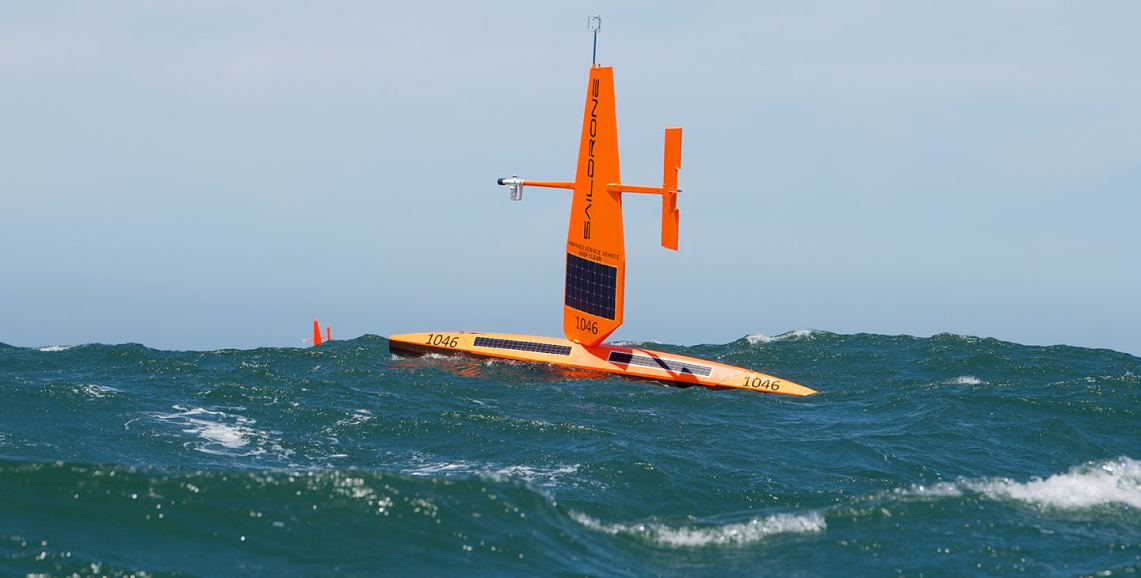Saildrone
Transforming Ocean Data Collection with Autonomous Drones
Eric and Wendy Schmidt were attracted to the vision of Saildrone from the earliest days of the company’s formation. They recognized the potential that Saildrone’s autonomous surface vehicles offered to transform the way that a wide range of oceanographic data was collected and became the company’s first philanthropic supporters through a previous foundation. Their involvement with Saildrone was one of the earliest inspirations for Schmidt Marine Technology Partners’ mission to support the development of scalable ocean technologies. So, when they founded Schmidt Marine in 2015, Saildrone was an obvious fit as its first project to fund. Then, as the company evolved over the years, the Schmidt Family Foundation’s Impact Investing program came in as a major initial backer in an effort to support Saildrone’s continued momentum.
Richard Jenkins founded Saildrone in 2012 to develop unmanned solar and wind-powered vehicles that could collect ocean data. The goal was not to replace research vessels, but rather to augment conventional oceanographic work by making the collection of certain types of data vastly cheaper; that way, work on ships could focus more exclusively on research that requires in-person human involvement. Having now logged approximately 25,000 days at sea and sailed more than a million nautical miles, Saildrones have made that vision reality. Configurable for an endless range of missions, the vehicles have been used to track great white sharks, sailed through a hurricane collecting atmospheric and oceanographic data, and circumnavigated Antarctica.
“Understanding the seabed is crucial for geophysics, circulation, understanding where the carbon goes, where the heat goes, what’s happening to things like our fish stocks.The difference we can make with this technology is exponential.”
Richard Jenkins
Saildrone vehicles merge multiple sophisticated systems into one rugged package. The drones themselves navigate autonomously according to pre-programmed plans without any human intervention required for months at a time. They can be outfitted with a wide range of sensors to measure everything from temperature to chlorophyll to carbon levels in the water or the atmosphere. Once data is collected, the Saildrones transmit them in real-time to a shore-based data center, where it’s analyzed and applied across a variety of research and conservation areas. These capabilities make it possible to perform a variety of tasks such as collecting data to improve climate models, enabling assessment of fish stocks, and monitoring marine protected areas. More recently, the company has been developing capabilities for seafloor mapping and a host of other applications including maritime security.
Saildrone has become a world leader in providing autonomous ocean data solutions, and the more the team grows, the more exciting it becomes to watch them fill numerous gaps in ocean data collection. As the demand for ocean research and exploration continues to increase, Saildrone vehicles are likely to become an increasingly important tool for scientists, governments, and other organizations.
